Meet your Sex Hormones
Hormones are the driving force behind reproduction and are what make us keen to go make babies. We follow some of these hormones to hear how they have an influence from birth to death, and also the unexpected consequences they have on society, including causing the stock market to crash. Plus what Philae has revealed about the comet it landed on, how the bugs in your guts might be making you moody, and the key to keeping hamsters happy...
In this episode

01:00 - Philae finds organic molecules on comet
Philae finds organic molecules on comet
with Professor Andrew Coates, UCL, and Dr Geraint Morgan, Open University
Last November scientists from the European Space Agency (ESA) achieved the first ever  landing of a probe on a comet when Philae touched down on the surface of 67-P Churyumov-Gerasimenko. This week the journal Science has published seven key papers detailing the discoveries made by Philae on the surface of the comet, which is more than 4.5 billion years old and assembled from the same material that spawned our planet. Chris Smith spoke to two mission scientists, Andrew Coates and Geraint Morgan, to get their take on the findings.
landing of a probe on a comet when Philae touched down on the surface of 67-P Churyumov-Gerasimenko. This week the journal Science has published seven key papers detailing the discoveries made by Philae on the surface of the comet, which is more than 4.5 billion years old and assembled from the same material that spawned our planet. Chris Smith spoke to two mission scientists, Andrew Coates and Geraint Morgan, to get their take on the findings.
Andrew - So, one of these papers is actually talking about the strength of the comet and it was a hard surface but underneath a much softer surface which seems to be stuff which has come out in the cometary eruptions which were going on all the time to produce that cometary coma and the tail and everything.
Chris - So just sort of summarising that then, what we've learned is that the surface is extremely hard like an iced cake and it's a softer, sort of "meringuey", soggier stuff inside.
Andrew - Well, yes it's softer inside, but on the surface, it's very hard. Now, I mean some of these is a big surprise. So surprised that it was so hard, but we've known about cometary crusts since the time of comet Halley actually when we had the Giotto spacecraft went pass comet Halley. So, one of its big discoveries was the fact that comets are dark, there's jet activity, there's also these crusts. So, every time a comet goes around the sun, it's sort of roasted by sunlight and produces lots of volatile material, the water and so on from underneath the surface which moves away, leaving this crust. So now, we've been able to sort of taste and feel a crust to see how hard it is.
Chris - As well as feeling the surface, Philae has been sniffing it too although in the way the mission team had planned. When it landed, the probe bounced several times before it came to rest, leaving it sitting on its side and concealed under a cliff. Because of that, the drill that the Open University's Geraint Morgan and his colleagues were going to use to sample the chemistry of the comet was out of action. But all was not lost.
Geraint - What we ended up having is samples coming in through our exhaust pipe. The way we vent our mass spectrometer system is through an external pipe and we believe that what happened was when we hit the comet, it threw up a big dust cloud and we ended up basically analysing that kind of dusty cloud that was generated from the impact. And so, we were able to get gas into the mass spectrometer that way and that's what we call it now a "sniff" or "scratch and sniff" mode.
Chris - What did your "scratch and sniff" show?
Geraint - What we found was that as expected, the primary components of the comet are water. You also have carbon dioxide, and carbon monoxide. But you actually have a lot of organic compounds present as well. We believe this is because the idea was comets would be kind of a mix of black and white basically but we now think that the comet is actually very, very dark. We know that from albedo measurements of the surface. It's a very dark, dark surface. The probability is that you get photochemistry happening which then converts water and carbon monoxide and carbon dioxide into a polymeric compound. So, it's a long chain of carbon, hydrogen, and oxygen molecules. And that's what forms the kind of crust on the outside of the actual comet. Other measurements have suggested that this is several centimetres deep. But underneath, you then have the ice and the gases and those are what then form the tail of the comet.
Chris - Chemically, what are the implications of what you found? Could they be delivering important organic compounds to nascent planets like the early Earth?
Geraint - The simple answer is yes and what surprised us was, how diverse and complex the organic compounds were. And you know, you'll obviously get a lot of chemistry going on there which means that you can build up quite complex molecules. The one thing that was a little bit surprising was that we didn't find very much nitrogen. So of course, if you want to form amino acids and things like that then you need the nitrogen as well as the carboxylic group.
Chris - What is coming next then?
Geraint - Well, the Rosetta mission itself continues well into next year. The orbiter craft will obviously go through perihelion and will measure, look at what happens to the comet as it gets closer and closer to the sun and then comes away from the sun. In terms of the Philae lander, unfortunately, we've not had communications I think with just over 2 weeks now. The difficulty with the lander is that because we believe we're under a kind of cliff, it's getting the antenna in the right place for a long enough telecommunications and trading off that with the risk of potential damage to the orbiter craft if we try and fly too close. So, as it stands now, the orbiter is now concentrating orbiter science, but it will continue to look for the lander. If they can, it will pinpoint the lander and try and communicate with it and continue activity. But some of the best brains in Europe are working on this and I'm sure they will come to a conclusion fairly soon.

06:20 - Are street lights necessary?
Are street lights necessary?
with Dr Rebecca Steinbach, London School of Hygiene and Tropical Medicine
Every night our towns and cities are lit up by the comforting orange glow of street  lamps, helping us to see where we're going and illuminating those dodgy darkened alleys. The electricity bills add up to hundreds of millions for local authorities, but are they really necessary? Surprisingly, perhaps not - according to new research from Rebecca Steinbach and her colleagues at the London School of Hygiene and Tropical Medicine. She shed some light on the work for Kat Arney...
lamps, helping us to see where we're going and illuminating those dodgy darkened alleys. The electricity bills add up to hundreds of millions for local authorities, but are they really necessary? Surprisingly, perhaps not - according to new research from Rebecca Steinbach and her colleagues at the London School of Hygiene and Tropical Medicine. She shed some light on the work for Kat Arney...
Rebecca - We invited every local authority in England and Wales to give us information on any changes that they had made to street lighting and if they had made any changes to street lighting, what were the dates of those changes and what were the locations. And then we're able to use data from the police on the locations and timings of road traffic casualties and crimes. And then we were able to model whether any changes in street lighting provision were associated with any changes in road traffic casualties or crimes.
Kat - And are they? is the big question.
Rebecca - So in the end, we were able to get data from 62 local authorities which included over 25,000 kilometres of road where there had been some form of street lighting change and we found no evidence that these were associated with increases in road collisions or crimes.
Kat - Given that there are negative impacts of lots of light at night in our cities and towns and given that it costs a lot of money, can't we just turn all the lights off? Surely, that's the solution.
Rebecca - It's important to note that local authorities consider a lot of things when they're thinking about reducing street lighting. So, we were only able to evaluate what's already happened. Local authorities have thought very carefully about where they want to change street lighting provision. They think about things like how much motorised and non-motorised traffic is on the road, how much other light sources there are, whether there's a history of collisions or crime on those roads. So, they've chosen these roads very, very carefully. And I think it's just that these need to be chosen very carefully in the future as well. So, our study doesn't suggest that you can just turn off lights on any road and it will be safe - definitely not.
Kat - And I guess in terms of public perception, you may say, "Look, it's perfectly safe if we lower the levels of lighting in this area" but does that mean that people will still feel safe? What's the data around that?
Rebecca - That's a good question. So, we had part of our project, we went and talked to people in 8 different local authorities where they had made some changes to their street lighting provision. And we found that that came across very strongly, that lots of people said that they felt less safe walking around the areas in which they had changed street lighting. That's a possible mechanism to explain why we found nothing. It could be the reason that road collisions and crimes aren't increasing is because less people are leaving their houses. It's very possible that that's happening.
Kat - Are there things the councils could do to minimise the impacts on things like wildlife and health rather than just completely turning the lights off?
Rebecca - Sure and very few local authorities are completely turning their lights off. There are range of strategies that we looked at. Turning off lights between the hours of say, midnight and 6:00 am when very few people are out anyway. It's one strategy that lots of local authorities are employing. Another common strategy is dimming the lights. Another common strategy is switching to LED - more energy efficient lights - which changes the quality of the light and those are sort of the strategies that local authorities tend to be doing rather than turning them off during all hours of the day.
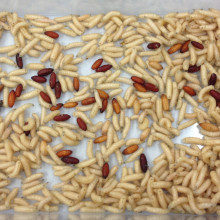
10:06 - Are your gut bugs making you moody?
Are your gut bugs making you moody?
with Premsyl Bercik, McMaster University
The human body is teeming with microbes. In fact, there are more bacteria living on and in us than there are cells in our entire bodies: each of us is outnumbered 50 to one by these microbial passengers, which are collectively known as our microbiome. Now, scientists like Premsyl Bercik are finding that these bugs are not passive hitchhikers after all and, instead, are influencing how we feel; and there are lots of them doing it, as Chris Smith discovers...
Premsyl - For humans, it's approximately 1 or 2 kilograms of bacteria which we are carrying in our intestines. If you think about it, this is a large metabolic organ which is generating many molecules and some of these molecules were shown to be able to interact with the nervous system.
Chris - It's anxiety and depression that you are specifically studying here because you're trying to ask, "Can we induce or prevent anxiety or depression in animals based on what's living in their gut?"
Premsyl - Right. So up to now, most of the studies performed in animal models were using healthy animals. In this specific study, we took advantage of an established model of anxiety and depression which is based on early life stress. It's called the maternal separation where the newborn mice are separated from their mums for a period of 3 hours every day for 3 weeks. This manipulation changes their behaviour later on. What is very interesting that this also affects their reactivity to stress, that means the level of stress hormones, and it also changes the way how the intestine behaves. For example, motility, that means how the intestine moves, voluminal content or permeability, that means how we are absorbing certain nutrients or even bacteria products is altered.
Chris - What about the microbes themselves?
Premsyl - In the first part of our study, we actually measured the composition of bacteria and found that there is a difference between the healthy and maternally separated mice.
Chris - Is that just not a consequence of the animals are unhappy, they're unwell and therefore, they're eating less or they're eating different foods, or do you think that the microbes changing is having an additional effect on the mood of these animals?
Premsyl - Well, I think this is the crucial point of this study. We performed similar experiments in mice without bacteria. Mice which live in sterile environment and like this, we were able to test the effect of presence of bacteria. What we found in mice without bacteria was that they have abnormal stress hormone levels. Their gut function is still abnormal. However, they behave normally. That means they don't show any signs of anxiety or depression.
Chris - Are the microbes that are in the animals normally exacerbating the symptoms then? How do you explain the fact that they don't behave like animals that do have bugs in them?
Premsyl - Well, we think what is happening is that the different function of the gut creates different habitat for bacteria and these bacteria then start producing different molecules which in turn can alter the behaviour of the host.
Chris - It's not for example that an animal that's not feeling very happy just eats different food.
Premsyl - Well, these mice we all fed by the same food and we have - in previous experiments, we have measured the consumption of food. So, it cannot be attributed just to change in their diet or eating habits. But we have identified actually several molecules in these altered bacteria which are known to affect behaviour. So, we think that we have at least some possible candidates which are responsible for this abnormal behaviour.
Chris - Now, the obvious question is, how does this relate to humans?
Premsyl - I think this is the one million dollar question. So far, there are no data in humans to show a cause-effect relationship between bacteria and depression or anxiety. However, there are some hints that would suggest that bacteria may be involved. Two recent studies suggested that microbial profiles differ between patients with depression and healthy controls. And finally, a study from the UCLA has demonstrated using brain imaging that mixture of probiotics, that means these healthy bacteria can alter brain connectivity patterns in healthy volunteers.

15:22 - Inside the T. rex tooth
Inside the T. rex tooth
with Kirstin Brink, University of Toronto
Carnivorous dinosaurs belonged to a group know as theropods. Their teeth were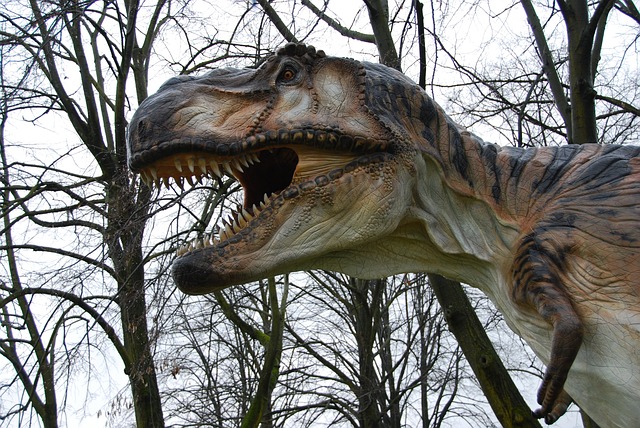 their main weapons and were used to tear through the flesh of prey, or rivals, as quickly and efficiently as possible. Until now, it had been assumed that these teeth were relatively simple in nature and had evolved just to be very big and very sharp. However, new research suggests that there's a lot more going on beneath the surface than you might think. James Farr spoke to Kirstin Brink, from the University of Toronto, to travel back in time and work out why T. rex was so notoriously deadly...
their main weapons and were used to tear through the flesh of prey, or rivals, as quickly and efficiently as possible. Until now, it had been assumed that these teeth were relatively simple in nature and had evolved just to be very big and very sharp. However, new research suggests that there's a lot more going on beneath the surface than you might think. James Farr spoke to Kirstin Brink, from the University of Toronto, to travel back in time and work out why T. rex was so notoriously deadly...
Kirstin - One characteristic of theropod teeth is that they have serrations. So, if you can picture a steak knife, they have these tiny bumps on the front and back of the teeth and that helps to pierce through the flesh of the animal that they were eating.
James - Well, that's a wonderful image. As if Jurassic World wasn't scary enough already, now, I'm imagining all the dinosaurs with rows of glinting steak knives in their mouths. Metal mouth dinosaurs aside, how do you go about finding what dinosaur's teeth look like on the inside?
Kirstin - What I did was to cut open the teeth of 8 different types of theropod dinosaur. So this includes one of the most well-known theropods - Tyrannosaurus rex. And then after they were cut, some of them, I would grind down so that I could look at them under a microscope and look at the structure of the tissues. Some of them, I didn't grind them down, but I looked at the cut surfaces with a scanning electron microscope which is a different type of powerful microscope. And some of the teeth, after they were cut, we analysed them in a synchrotron which actually analyses the chemical composition of a tissue. When you look inside the teeth of the theropod dinosaurs, they have these really kind of complex unique structures that haven't been seen in the teeth of any other animal.
James - It would seem that there's a lot more to these teeth than meets the eye then. Not only are they serrated, but it turns out that their internal tissues are arranged in a very unusual way around the bases of these serrations. These have big benefits for your average T. rex on a day to day basis.
Kirstin - So, the structure actually helps to increase the size of the serration within the tooth and that in turn strengthens each serration and prevents them from wearing away while the dinosaur is eating.
James - That's sounds very handy to me. They must have saved an absolute fortune on dentist's bills. The carnivorous dinosaurs are well-known for their vicious teeth and yet previously, these teeth had been thought to be very straightforward.
Kirstin - Typically, animals that eat meat don't have as complex teeth as animals that eat mainly plants. Plants are very hard to chew and so those teeth wear away much more quickly, and so the teeth need to be much more complex in order to resist that wear. So, it's really surprising that a theropod would have complex teeth as well, considering that they're eating much softer foods.
James - Previous theories had suggested that the serrations in the theropods teeth had been caused by the strains of eating as each dinosaur aged. However, since their food is generally quite soft, this seemed rather unlikely.
Kirstin - So, I looked at teeth that were fully mature and I also looked at teeth that were still developing within the jaw of the dinosaur. So, they had not been subjected to any stresses through feeding. And these unique structures are present in the immature and mature teeth.
James - The main question that remains is whether the 8 theropods studied are the only animals that have these intriguing dental structures.
Kirstin - I've only examined 8 theropods in this study and there are many, many more known. So, we really need to look at, if this unique structure is present in any other theropod dinosaurs. It's also kind of interesting that the first birds also had teeth that had serrations on them. So, that might be interesting too to see if the first birds had teeth that were very similar to other large theropod dinosaurs.
Chris - Kirstin Brink from the University of Toronto, her paper came out this week in Scientific Reports.
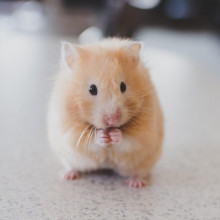
19:45 - Hammocks, hamsters and happiness
Hammocks, hamsters and happiness
with Dr Emily Bethell, Liverpool John Moore’s University
Hamsters are popular pets, and research this week has revealed that more 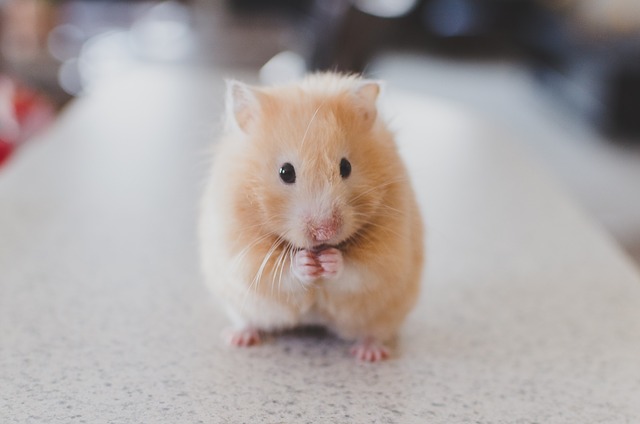 hammocks and fluffy bedding make for happier hamsters. While this itself may not sound too surprising, finding a way to measure an animal's happiness has always posed a major challenge - how do you know what's going on inside their heads? Georgia Mills caught up with Dr Emily Bethell, a senior lecturer in primate behaviour at liverpool John Moore's University...
hammocks and fluffy bedding make for happier hamsters. While this itself may not sound too surprising, finding a way to measure an animal's happiness has always posed a major challenge - how do you know what's going on inside their heads? Georgia Mills caught up with Dr Emily Bethell, a senior lecturer in primate behaviour at liverpool John Moore's University...
Emily - People often think that researching emotions means that you're looking at subjective feeling states. It doesn't, emotions are basic survival mechanisms which animals have evolved over time to direct them to seek rewards and to avoid threats. So, we would expect that all animals have emotions because this is what allows individuals to survive to move around their environment, to gain food, mate, shelter, and to avoid predators, poisonous foods and so on.
Georgia - How did you test this in hamsters?
Emily - We trained the hamsters to approach drinkers that were placed at one of five locations in a test arena. The arena was one metre by one metre and had five holes along one side. The hamsters learned that when a drinker was placed at one of the locations, for example, at the far right, it would always contain sugar water. However, when the same drinker was placed at the far left location, it would always contain quinine in the water. Quinine is bitter and hamsters really don't like it.
Georgia - But they like sugar water?
Emily - They love the sugar water. So over time, the hamsters learned to approach the sugar drinker which they did so quickly and regularly. They pretty much stopped responding altogether to the quinine drinker.
Georgia - At this point, half the hamsters got a fancy home upgrade. They get extra bedding, extra hammocks and chews. What Emily would call 'enrichment'. The other less-lucky hamsters are stuck with the status quo. They all have a weekend to enjoy their quarters before the drinkers are back. But this time, there's a twist. There are five of them. There's one back in the sweet sugar location, one still in the bitter quinine location, and then three intermediates in between. Get inside the mind of the hamster. Do you expect the middle ones to be nice or nasty?
Emily - We predicted that the hamsters housed with the enrichments would be in a more positive emotional state and would therefore make more optimistic judgements about what might be in the drinker, at the intermediate locations. So, we'd expect those hamsters to approach these three middle locations more often and more quickly than hamsters when they didn't have the enrichments and therefore were in a more negative emotional state.
Georgia - And you're thinking there is that an optimistic hamster is a happy hamster.
Emily - Possibly. By definition in humans, we talk about happiness and welfare in terms of our expectation of future positive events, and our positive interpretations of otherwise ambiguous stimuli.
Georgia - Did you find that the hamsters who had the nice bedding and the hammocks, they were more optimistic?
Emily - This is exactly what we found. The hamsters who had received the enrichment approached the ambiguous queues more often than the hamsters who weren't enriched.
Georgia - I wish I'd known that when I had my pet hamsters. They just seem to die in about two weeks. I obviously hadn't used enough hammocks... or food potentially.
Emily - Hamsters are short-lived and that's what makes them good pets in a way. You don't have to clean their cages out for too long.
Georgia - Now, we think we know that this test works on hamsters and we can test them for happiness, do we think we could take this forward and use it across the board in animals?
Emily - Yes. Well, I have a paper coming out soon, talking about the possibility of using these kinds of tests for examining emotions in species or groups of animals which are more problematic when it comes to talking about emotion states, and that's the fishes, the reptiles, and amphibians. I'm proposing that these kinds of tests are absolutely perfect for the use with these species as well.

24:59 - Sex hormones: How do they work?
Sex hormones: How do they work?
with Dr Helen Simpson, Addenbrooke's University
Hormones are the chemical messengers that control eating, sleeping, mood, and also  hold the key to our sex lives. How do hormones work, and what happens when you start taking sex hormone replacements? Dr Helen Simpson is a consultant hormone specialist from Addenbrooke's hospital, and she covered the basics for Chris Smith...
hold the key to our sex lives. How do hormones work, and what happens when you start taking sex hormone replacements? Dr Helen Simpson is a consultant hormone specialist from Addenbrooke's hospital, and she covered the basics for Chris Smith...
Helen - So hormones are chemical messengers which are produced by endocrine glands into the bloodstreams. From there, they go to distant sites in the body acting on their target cells. They control pretty much everything that we do. So, they help provide energy for our cells to work. They're controlled in regulating growth and reproduction.
Chris - How do they actually work? So although we're secreting these chemicals from one place in the body to another, how do the target cells know they're being targeted?
Helen - So if you like, it's a little bit like a lock and a key in a door. So, the hormone is the key and they act on receptors which are on all cells of the body and they're the locks and there's a specific configuration for different hormones in their particular receptor. So, if you think about oestrogen - the female reproductive hormone - that's produced from the ovaries and this acts on certain particular cells in the body, so the breast tissues, when we go through to puberty, bones and the uterus.
Chris - You can therefore constrain which tissues respond to your hormone by having the receptor, the docking station, the hormone wants to see expressed on those particular tissues which will give them the ability to see that hormone going around in the bloodstream.
Helen - That's right and then some hormones such as thyroxine - the thyroid hormone and growth hormone, they act on actually all the cells in the body so they have a much more widespread effect. So, it enables the endocrine system to target appropriately.
Chris - What about the reproductive system? What are the key players in the reproductive game?
Helen - So, if we're thinking about reproductive hormones, ovaries produce oestrogen and progesterones and they're the female hormone and testes produce testosterone which is predominantly a male hormone. These act on and are picked up by a negative feedback mechanism from parts of the brain called the hypothalamus and the pituitary. The pituitary gland is a really important gland for endocrinologists because it controls many hormones in the body. It's about the size of a pea and if you get two knitting needles and you put one on top of your nose and one by the ear and they're pressing together where they cross in the middle, that's where the pituitary lives.
Chris - Sounds rather uncomfortable.
Helen - What that can do is regulate and it's a little bit like the accelerator in a car. It tells the ovaries or the testes how much or how little testosterone and oestrogen to make to keep everything in a regular balance.
Chris - People will be associated or familiar with the idea that if you have a drop off in a level of a hormone, any kind of hormone whether that's insulin for diabetes or for thyroid function like thyroxine, we can make these chemicals and put them into the body to replace the missing function?
Helen - That's right, so one of our jobs as endocrinologists is to do blood tests to diagnose if someone has too much or too little of a hormone. So if we're thinking again about the ovaries and if they stop working either at an early age so premature ovarian failure. Or at the average age or menopause at the average age in the fifties, we can do tests to diagnose that and then we can replace the hormones with hormone replacement therapy, predominantly to reduce the symptoms of the oestrogen deficiency.
Chris - Is it safe?
Helen - It's pretty safe. So 10 years ago, there was a women's health initiative was reported which is a large study from America which had some quite scary data suggesting there was quite a large increase in breast cancer and heart disease. But when this data was reanalysed, it looks like those women were 10 years older than when we use it usually in the UK so over the age of 60. And they were often more overweight than British counterparts. So, when we've looked at the data now, it looks like the increased risk in breast cancer is probably approximately 4 in 1000 women for about five years of use. If you're before the age of the menopause there's no data there saying that these hormones are unsafe.
Chris - And is there an equivalent for men? Could men have a testosterone boost via a patch or whatever to overcome some of their declining testosterone levels with age?
Helen - So testosterone replacement is available in the same way HRT is for women. The controversy is whether this treatment is beneficial for men, of middle-aged men where there's no definite evidence of testosterone deficiency. Again, there does seem to be some risks. The FDA sent out a warning earlier in this year and that there may be increased risks of heart attacks and vascular disease and blood clots in middle-aged men without testosterone deficiency who were using testosterone replacement.
Chris - All of these athletes who are naughty and they abuse anabolic steroids which are male hormones that promote the maleness, they encourage muscle growth and all that kind of thing, do they end up with their bits shrinking because they're basically suppressing strongly the need to make their own testosterone through taking it in a pill?
Helen - That's exactly right. So what happens there is as you're taking a hormone from an exogenous source, the pituitary in the hypothalamus which I mentioned earlier, that essentially goes to sleep. So, it stops sending the signals to the testes and that's partly why they shrink because they're not having to make testosterone anymore. If you take these for enough years then the hypothalamus and pituitary will go to sleep permanently and they won't wake up again.
Chris - So, even if the person stops taking the anabolic steroid then their testes are destined to remain like peanuts forever.
Helen - Essentially, that's right. We're getting more patients referred in this context who then may need to go on medical testosterone replacement.
Chris - It's a sobering message in that, isn't it?

30:51 - The truth behind testosterone
The truth behind testosterone
with Professor Joe Herbert, University of Cambridge
Testosterone is certainly a well-known hormones. When you hear the word, you may think of aggression, lust and "lads". But this chemical is the ultimate multitasker, providing many different functions in the body and mind, and impacts across society. So how does testosterone help reproduction in the first place, and what is the link between this hormone and being good at stock trading? Joe Herbert, from Cambridge University, has written the book on testosterone and has worked on many studies into the hormone. He spoke to Kat Arney...
think of aggression, lust and "lads". But this chemical is the ultimate multitasker, providing many different functions in the body and mind, and impacts across society. So how does testosterone help reproduction in the first place, and what is the link between this hormone and being good at stock trading? Joe Herbert, from Cambridge University, has written the book on testosterone and has worked on many studies into the hormone. He spoke to Kat Arney...
Joe - Without Testosterone, you wouldn't be here, Kat, I wouldn't be here, nobody would be here. The world would be a very quiet place without testosterone. It's a very simple hormone. It's a very ancient hormone. It's present in amphibians, and reptiles, and birds, and fish, and of course all mammals. It comes most with the testes, a little bit comes from another gland called the adrenal which might be quite important in women, which I guess we'll come back to later.
Kat - I certainly don't have testes, last time I checked.
Joe - Good. I'm pleased to hear it. But in a male, it's overwhelmingly from the testes and this starts very early in life. I mean, within a few weeks of conception, the testes wakes up and starts pushing out testosterone. And that has enormous consequences.
Kat - So, let's talk a bit more about testosterone later in life. We've covered development very briefly. So, I do have this view that testosterone is kind of aggressive, manly sort of hormone. Is it really doing that? What's the role of testosterone in what we might describe as aggressive male behaviours?
Joe - Yes, doing all that - it has to. Testosterone has only one function really in the adultand that is to make the male fertile and sexy. Simple objective but complicated strategy because it has to do many other things than simply make him sexy. Let's make him attractive from the start. Otherwise, females won't agree. It has to make him aggressive so he will compete. It has to make him like taking risks so he'll get into a fight. With the possibility he might lose the fight and be damaged. And of course has huge effects on the whole of society. If you look at things we do every day, you can detect testosterone in practically everything.
Kat - So, one of the examples that I think you've studied is the idea that testosterone might be driving risk-taking in people who work in the financial sector. Tell me a bit about this. Was testosterone to blame for the credit crisis?
Joe - No, is the answer to that. But let me tell you why. If you look at a financial trading floor which is a huge room full of young men sitting in front of a lot of computers. What they're doing is, they're taking high risk quickly on the basis of lots of information. Now that's classic young male behaviour. Think of a young male creeping through the forest, hunting antelope - same problem. Or attacking a rival tribe in order to gain access to food or women or territory, exactly the same.
Kat - You just got to decide.
Joe - Absolutely. So, males have to make instant decision with the knowledge that if they lose, the results are dire. That's exactly what happens in traders. Now, the problem here is control. But all societies regulate testosterone. They don't allow males just to do as they please. If they did, it would be mayhem as you might imagine.
Kat - Have you been out in Norwich on a Friday night?
Joe - Yes, that's a good example of temporary loss of control because most of the time is controlled. Every religion, every society, every nation, controls who mates with who because rape is illegal in nearly all societies and so on. Now, if you get to international trading, you have the same problem here. You need control. What happened in 2008 was, not that males were doing anything different from what they normally had to do because in order to be a good trader, you've got to be a risk-taker, you got to be aggressive. What happened was a loss of control. They simply were doing it in uncontrolled way which is disaster in any context of testosterone.
Kat - Tell me about how you've been studying some of these risks and testosterone and that kind of behaviour in traders?
Joe - The first study we did was on real traders and we measured their testosterone and also another hormone called cortisol which is the stress hormone on several days and we related this to how much money they made. To our surprise, we got quite a marked positive relationship between levels of testosterone and their success. That is within the individual trader. Testosterone varies from day to day in men, but on days when their testosterone levels were particularly high, they made more money. Interestingly, their cortisol levels were very different and they responded to the uncertainty of the market. You can measure market of uncertainty. That was how volatile it is. If it's very volatile, up goes their cortisol and that's important too because that has effects on risk as well. But we went on to do this by looking at real trading. Not in real traders, but in graduate students. We made them play a game which looked very much like a trading floor. They had to basically bet on how their stocks did and they got real money. Not very much real money but they got some real money.
Kat - For students enough to make it worth it.
Joe - What we found there was, interestingly enough, that both cortisol and testosterone and we gave them both, different subjects on different days. But both increase risk taking, interestingly for different reasons. Cortisol made them like risk more. But testosterone didn't do that. What it did was made them optimistic. They thought they were better than they really were.
Kat - They felt kind of good and like, "Yeah, I could do this."
Joe - Doesn't that ring a certain bell?
Kat - So, that's really proving that testosterone is making people feel kind of good about themselves. It's making them want to put themselves out there and go for it which comes back to the sex thing?
Joe - It does. It comes back to initiative and drive and motivation, so you've got to believe in yourself. You got to believe that you can do it. As you know, one of the catches of young men is sometimes that's overdone. They believe they're better than they really are.
Kat - So, in terms of being able to manipulate testosterone, say, someone who doesn't feel that they're very outgoing, is there something that people could do maybe in terms of exercise or diet that might boost their testosterone. Is there any truth in this?
Joe - The best way to manipulating your testosterone is win something. The best way to reduce is to lose something. If you win a tennis match or a chess match or I don't knowget a promotion, or someone tells you how great you are, up goes your testosterone.
Kat - We've talked about testosterone with regards to men and what might be considered to be masculine behaviours, aggressive behaviours. I'm a lady, but am I still making testosterone and what's it doing for me?
Joe - You are making testosterone, Kat. You're making it for your ovaries and for your adrenals. Now, in males, the adrenal contribution doesn't matter very much because the testes make so much, it gets lost. But in you, roughly, around about half your testosterone comes from your adrenals, the other half is the ovaries, and your levels are about somewhere between a 5th and a 10th of that of an average male.
Kat - Is it doing the same kind of thing to me, kind of making me when I get out there and feel kind of sexy?
Joe - Sexy, certainly. It's highly important for libido. Whether it has other effects like it does on males is much less certain. But the suspicion is that it doesn't necessarily have the same effect because don't forget, you have a female brain whereas a male brain is substantially different, that's the reason why testosterone in a male will do different things than a female. Apart from sexuality, that's the common feature of both sexes.
Kat - Can you imagine what a world might be like maybe with no testosterone or if everyone had the same kind of levels as women? Would it just be calmer and generally more nice?
Joe - No not at all. Testosterone has got a bad press, but actually, it's responsible for a huge amount of get-up and go, of innovation, of drive, of motivation, of excitement. It's really a very interesting and valuable hormone. I'd hate the world to have no testosterone.
Kat - More testosterone all around. Thank you very much. That was Joe Herbert.

40:01 - Can paracetamol disrupt pregnancy?
Can paracetamol disrupt pregnancy?
with Professor Richard Sharpe, University of Edinburgh
Hormonal activity starts early on in the womb, leading male and female foetuses down very different paths of development. But as with any developmental process, things can go wrong, and male reproductive disorders seem to be on the rise - but what could be causing this? Richard Sharpe runs a research group at the University of Edinburgh in the MRC Centre for Reproductive Health, and has been investigating potential causes for these issues. He started by telling Georgia Mills the roles of hormones in development...
Richard - Ultimately, whether you've got a Y chromosome or not determines whether you become a male. But it won't actually happen unless you make the hormone testosterone or which we call an androgen, so the male sex hormones and that has to be made very early in pregnancy by the male foetus. It's that hormone that actually transforms you into a male. Otherwise, the setup programme is for the foetus to develop as a female. So, we would all become females if it wasn't for the intervention of the male sex hormone in males.
Georgia - Do we know how these androgens; these male sex hormones, work?
Richard - They work through a sort of a lock and key system. So, they work through what's called the androgen receptor. That's a key step in the process. So, you have to produce the hormone, it has to interact with the receptor to cause its biological effects. In this case, masculinisation and development of male reproductive organs. And there are rare cases where you have individuals who are genetic males, who have inactivated mutation in the androgen receptor. So that although they make the hormone, they can't actually respond to it and they develop as phenotypic females.
Georgia - So, the receptors can go wrong and not receive this hormone, but what happens if the hormones aren't released in the correct amounts?
Richard - The current thinking is that this is where most of the common male reproductive disorders originate. So, to give you examples of disorders, one that is one of the most common disorders that's seen in babies at birth is the failure of the testes to have descended into the scrotum. If we then move through to young adulthood, what's even more common is to have a sperm count so low that it can potentially impair your fertility. Another disorder that originates from foetal life that we see in adulthood is testicular cancer which has been increasing progressively in young men over the past 60 or 70 years. That's the commonest cancer of young men.
Georgia - You've said these disorders are quite common. What kind of numbers are we talking about here?
Richard - The figure I often use if I'm talking to an audience is to say something like 1 in 5 or 1 in 6 of the guys in the room will have or will have had one or more of these disorders which I think is quite a discomforting statistic. They shouldn't really occur. They're far more frequent than we think ought to be the case.
Georgia - Why do we think these are so frequent?
Richard - I think the simple answer is that we don't know. But there's certainly growing evidence that it's something in our environment.
Georgia - I know this is something you've been looking at quite a lot. Do you have any candidates that you think may be quite responsible?
Richard - Yeah, we do have one candidate and it really came very much as a surprise. It's the painkiller paracetamol that is very widely used. We know from studies in the UK and US that something like 50 to over 60 per cent of pregnant women use paracetamol during pregnancy. There have been 4 studies which have found an association between using paracetamol during pregnancy and an increased risk of testicular nondescent in boys that the women then give birth to. Because the role of androgens in testicular descent is so well established then what this suggested to us was that maybe paracetamol was affecting testosterone production. And it's one thing to have that idea it's another to try and test it or prove it because we have no way of actually measuring testosterone production by the foetal human testes. Remember it's inside the mother's womb and the testes are inside the foetus. So, what you need in this situation is a bit of ingenuity. And so, I had a PhD student, Rod Mitchel who's a paediatrician who developed an ingenious system to actually try and assess whether paracetamol had effects and involves taking foetal human testes tissue which then gets what we call xenografted into mice. So, that means that you can actually use them as a sort of a test bed for asking if we give the mice a particular drug or chemical. Does this actually affect testosterone production? What he's found is that if you expose them to human therapeutic doses of paracetamol then if you do that for one week then you'd cause quite pronounced suppression of testosterone production. Whereas if you expose them for one day, you don't get any suppression. So, on the basis of that basis of work, then the recommendation is that as current guideline suggests that pregnant women should use paracetamol for the minimum amount of time possible.
Georgia - I find that really surprising because paracetamol is sort of over-the-counter, everyone is using it all the time that it could have such a pronounced effect. Are there any other things that you've got your eye on that you might test in the future?
Richard - The one thing that we know affects our health perhaps more than any other thing is our diet. There have been huge changes in our diet over the past 50 or so years. So, I would put mother's diet very much on the top of a sort of a suspect list that something about our changing diet could be a factor that could affect testosterone production by the foetal testes, but that's speculation.

47:01 - Oxytocin: the Moral Molecule
Oxytocin: the Moral Molecule
with Dr Paul Zak, Claremont Graduate University
Attracting potential partners is not all there is to reproduction - there are hormones 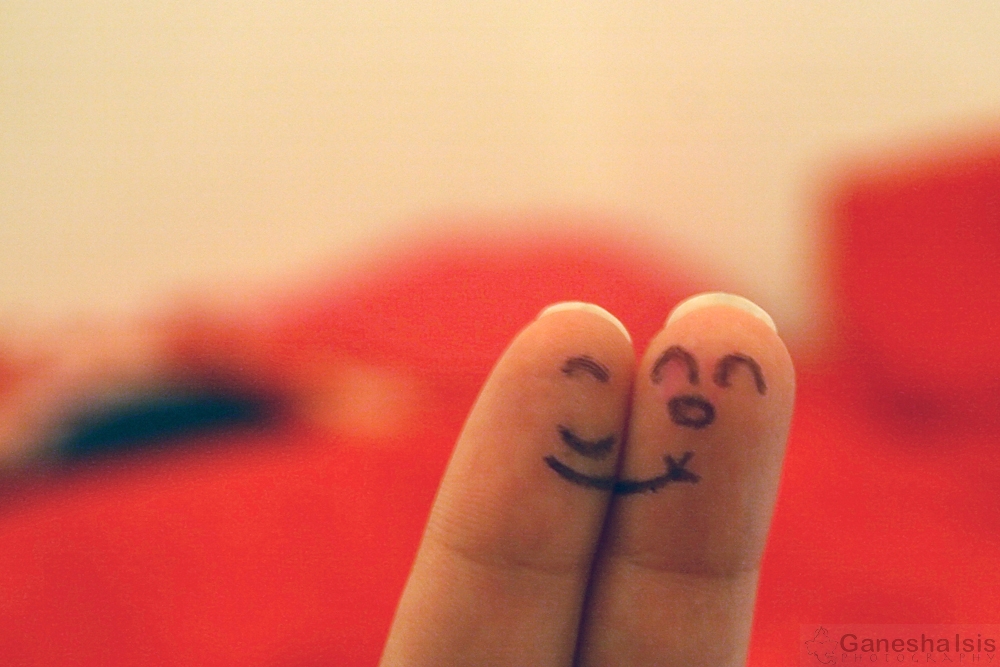 involved with actually having babies, and also building relationships. One such hormone, which has attracted a lot of recent attention, is oxytocin. Oxytocin is known to be important in women for breast feeding, although more recently it has been suspected oxytocin has an important role to play in both sexes in forming trust and relationships. Paul Zak, of Claremont Graduate University, has made it his mission to investigate this so called moral molecule, as he explained to Chris Smith...
involved with actually having babies, and also building relationships. One such hormone, which has attracted a lot of recent attention, is oxytocin. Oxytocin is known to be important in women for breast feeding, although more recently it has been suspected oxytocin has an important role to play in both sexes in forming trust and relationships. Paul Zak, of Claremont Graduate University, has made it his mission to investigate this so called moral molecule, as he explained to Chris Smith...
Paul - What's most exciting about oxytocin is in the last 15 years, we discovered that it's released on stimulus in the brain itself. So, the brain is the target for oxytocin. It's effects are increasing awareness of social cues and it does that essentially by making us more empathic. So, when I release oxytocin, I'm more sensitive to your feelings or the feelings of people around me. But oxytocin, we're learning in the last 15 years is a key part of the adaptive human social system.
Chris - When these sorts of social interactions are happening, I enjoy a beer with somebody, I go to a family event or something, we all sit down, we cooperate, we get on. That is associated with an oxytocin release from all parties and that reinforces that social bonding. Is that what you're saying?
Paul - Yeah, even more strongly. How do we live in these big cities, in this sea of strangers? How can we walk on the sidewalk in London or New York and not be completely freaked out like chimpanzees would if they had stranger chimpanzees around them. So, oxytocin seems to be this very rapid brain signal that signals safety, or trustworthiness or familiarity. There's good evidence for that in rodents and again, 15 years of evidence in humans that is functioning as this, "It's okay to be around the other humans." So, the cost of being around other humans is they might attack you, they might be aggressive, they might be scary. But the benefit is, all of the ability to cooperate with others to find, build alliances to protect each other, to find romantic partners, all those things appear to be enabled by the brain's release of oxytocin.
Chris - So, under what settings is oxytocin released in those adults?
Paul - We found hallf a dozen different ways the brain can be stimulated to make oxytocin. Everything from touch, to watching a sad movie, to having someone trust you tangibly. So, we showed that by doing very rapid serial blood draws and we can see the spike in oxytocin and that spike in oxytocin will predict how much you'll reciprocate in a like way. So, I think of oxytocin as the biological substrate for the golden rule. If you treat me nice Chris, I will release oxytocin and I'm motivated to treat you nice in return.
Chris - So, why don't we have a system that just sprays this around football matches to keep everyone on the same side so to speak, public transport so no one gets angry and beats anyone up? Why don't we use it like that?
Paul - So first of all, it would be illegal and immoral to drug people without their permission. The brain's oxytocin system is very focused. It's a fairly finely tuned system. In most people we tested - again 95 per cent and thousands of people around the world. So, if we intervened the system, oxytocin replacement is kind of a sledgehammer. And so, you lose that delicate conditionality. And so, if I did that then I might make people more vulnerable to conmen or to being taken advantage of in some way. I do think Chris, one of the most exciting things about the oxytocin research is that like all other brain systems, this system is plastic. It's learnable, it's trainable, and the more we release oxytocin, there's quite good evidence in animals that the more you become biased to release it. So, if we want to be more empathic, more compassionate as individuals, and potentially as a society then we can work on finding opportunities to induce oxytocin release in others. So, it's difficult to make your own brain release oxytocin because it requires this positive social stimulus, but we can give that gift to others by being kind to them, by recognising them, by giving them a hug. And that keeps oxytocin active in the brain for about 20 minutes. So, you hug someone you like. For 20 minutes, they feel more connected to people around them. They're calmer, they're just a little nicer. Isn't that a beautiful thing?
Chris - And the flip side, or is there evidence that a conman or conwoman are just very good at making people release oxytocin and therefore, imbuing trust?
Paul - There is evidence for that and we've done studies on criminal psychopaths in prison. On average, they don't release oxytocin and yet, they know the right things to say if they have high enough IQ. So they say, "I was very moved by this..." sometimes we use movies to induce oxytocin release and say, "I care so much about children in this movie. It really touched me." But their brains are saying something different. They're telling us that they really don't have the machinery to feel empathy for others. When you don't feel empathy for others, it's easy to mistreat them. And that's why I call oxytocin the moral molecule, it motivates us to behave in positive social behaviours to those around us. It's one of the many brain signals that motivates positive social behaviours.

52:39 - What are wormholes?
What are wormholes?
James Farr investigates with Harvey Reall, theoretical physicist from Cambridge University...
James - What are wormholes and how are they created in the universe? A wriggly one indeed. So what are wormholes? Are they science fact, or science fiction. When I put it to you on Facebook I had a very mixed response. Well Paul, and Miles Hendrik's both voted for fiction, David Horne suggested that they're "celestial temples, where godlike aliens live" - An interesting thought, but general consensus seems to suggest that they could be some kind of short cut across the universe. So does this mean you could jet off to an alien planet through one for your summer holidays? I think it's time to get an expert involved. Harvey Reall is a professor of theoretical physics at the University of Cambridge. Hopefully he can help us blast off from space and time to find a solution...
Harvey - A wormhole is a hypothetical shortcut between two seemingly distant points in space; the possibility of wormholes is motivated by general relativity, Einstein's theory of gravity, which is one hundred years old this year. In general relativity, space and time are not described by the geometry that we were taught in school. Instead they're combined to form a four-dimensional entity known as space time.
James - While in day to day life it's okay to consider three dimensional space, and one dimensional time, as completely separate concepts, Einstein's stroke of genius was to see that, when we're thinking on the scale of stars or galaxies, they are inseparably intertwined with each other. He came up with the idea of spacetime, often referred to as the "fabric of the universe". The force of gravity is produced by this spacetime being curved. To imagine this, think of a bowling ball and some marbles placed on a trampoline. The bowling ball makes the trampoline sag downwards and so the marbles roll towards it. Now, back to worm holes...
Harvey - Unfortunately, worm holes tend to be unstable and collapse to form black holes. This happens so fast that it would be impossible to travel across the wormhole, even at the speed of light. To overcome this problem you would have to build the wormhole using exotic matter.
James - While we've never seen this kind of matter, we know that it would produce an anti-gravity like effect, pushing things away from it rather than pulling them in. This would then be able to force a wormhole open and stop it from collapsing in on itself. Unfortunately though to make a wormhole big enough to travel through, you would need a lot of this exotic matter: to make a wormhole the size of a grapefruit, current estimates say that we would need to use the same amount of energy that our sun produces over one hundred million years.
Harvey - Therefore it seems very unlikely that wormholes could have formed naturally in our universe, or that an advanced civilisation could make one.










Comments
Add a comment